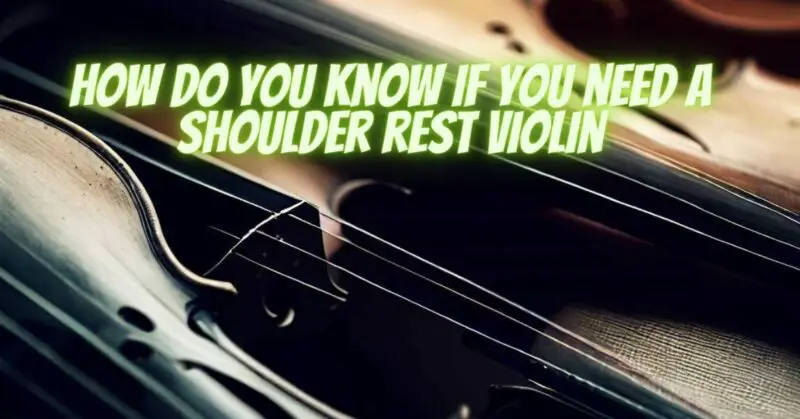Choosing whether to use a shoulder rest or not is a personal decision for violinists, and it depends on various factors, including comfort, playing technique, and individual physique. In this article, we will explore some indicators that can help you determine if you might benefit from using a shoulder rest when playing the violin. By considering these factors, you can make an informed decision that supports your playing comfort and musical development.
- Physical Discomfort: If you experience discomfort or strain in your neck, shoulder, or upper back while playing the violin, it could be an indication that you might benefit from a shoulder rest. The added support provided by a properly fitted shoulder rest can alleviate some of the tension and promote a more relaxed playing posture.
- Stability and Instrument Security: Consider how stable the violin feels against your shoulder and collarbone when playing. If you find it challenging to maintain a stable instrument position, or if the violin tends to slip or shift while you play, a shoulder rest might help provide a more secure connection between your shoulder and the instrument.
- Neck and Shoulder Shape: The shape and length of your neck and shoulders can influence your need for a shoulder rest. Players with longer necks or prominent collarbones may find it more comfortable and supportive to use a shoulder rest. Conversely, those with shorter necks or less prominent collarbones might find a shoulder rest unnecessary or even uncomfortable.
- Technique and Playing Style: Consider your playing technique and the specific requirements of your musical repertoire. Certain playing techniques, such as vibrato or extensive shifting, might benefit from the added stability and support that a shoulder rest provides. Additionally, if your repertoire involves demanding bowing techniques or quick position changes, a shoulder rest can help maintain a consistent instrument position.
- Sound Preferences: Evaluate your tonal preferences and the sound you aim to achieve from your violin. Some players believe that playing without a shoulder rest allows for greater contact and resonance between the instrument and the body, potentially influencing the tonal qualities produced. If you desire a more direct connection and a specific tonal character, playing without a shoulder rest might be worth considering.
Conclusion:
Determining whether you need a shoulder rest for violin playing depends on factors such as physical comfort, instrument stability, playing technique, and tonal preferences. Assess your playing experience, taking note of any discomfort or instability. Experiment with different setups, including playing with and without a shoulder rest, to see which option feels most natural and allows for optimal playing. Consult with a qualified violin teacher or experienced players for guidance tailored to your specific needs. Ultimately, the goal is to find a setup that supports your playing comfort, stability, and musical expression, enabling you to enjoy the violin to its fullest potential.


